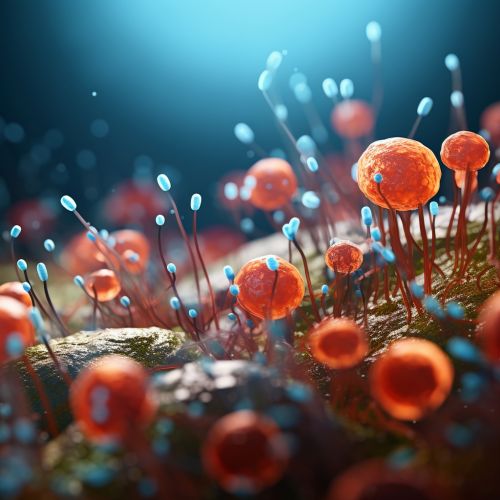Antibiotic
Introduction
Antibiotics, or antibacterials, are a type of antimicrobial drug used in the treatment and prevention of bacterial infections. They may either kill or inhibit the growth of bacteria. A limited number of antibiotics also possess antiprotozoal activity. Antibiotics are not effective against viruses such as the common cold or influenza, and their inappropriate use allows the emergence of resistant organisms.


History
The term "antibiotic" was first used in 1942 by Selman Waksman and his collaborators in journal articles to describe any substance produced by a microorganism that is antagonistic to the growth of other microorganisms in high dilution. This definition excluded substances that kill bacteria but that are not produced by microorganisms (such as gastric juices and hydrogen peroxide). It also excluded synthetic antibacterial compounds such as the sulphonamides. Many antibacterial compounds are relatively small molecules with a molecular weight of less than 2000 atomic mass units.
Classification
Antibiotics are classified based on their spectrum of activity. Broad-spectrum antibiotics, such as ampicillin and amoxicillin, can attack a wide range of bacteria, including both gram-positive and gram-negative. Narrow-spectrum antibiotics, such as penicillin G, are effective only against a limited number of bacteria.
Antibiotics can also be classified based on their chemical structure. For example, penicillins, cephalosporins, and aminoglycosides are all different classes of antibiotics. Each class has its own set of characteristics, including a different mechanism of action.
Mechanism of Action
Antibiotics work in one of four ways: by either inhibiting bacteria from multiplying, or by killing them, either by disrupting their cell wall synthesis, or by disrupting their protein or DNA synthesis.


Resistance
Resistance to antibiotics can develop naturally via natural selection through two main mechanisms: mutation and the acquisition and spread of resistance genes by horizontal gene transfer via plasmids. This process can be slowed by prescribing antibiotics only when necessary, and by ensuring that patients complete their treatments, even if symptoms have improved.
Side Effects
As with all medications, antibiotics have side effects. The most common side effects involve the digestive system and include nausea, vomiting, and diarrhea. Some people may also develop an allergic reaction to antibiotics, especially penicillins. Side effects of antibiotics can range from mild allergic reactions to severe and debilitating adverse events.
